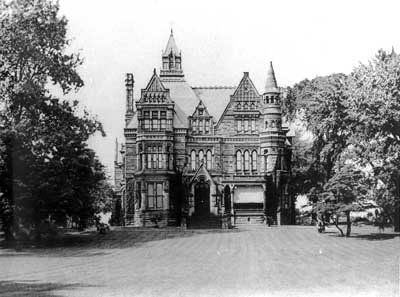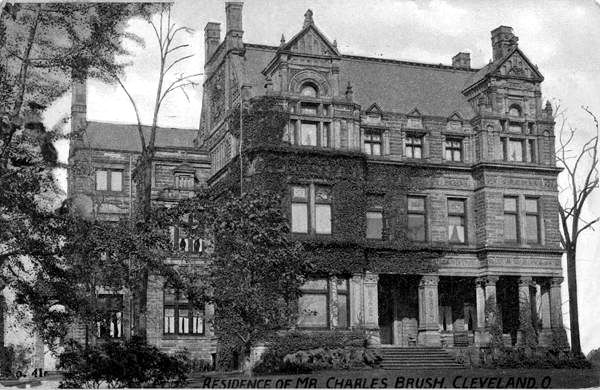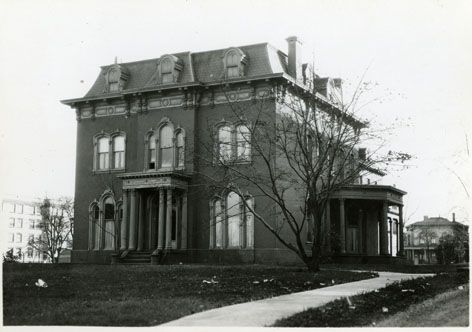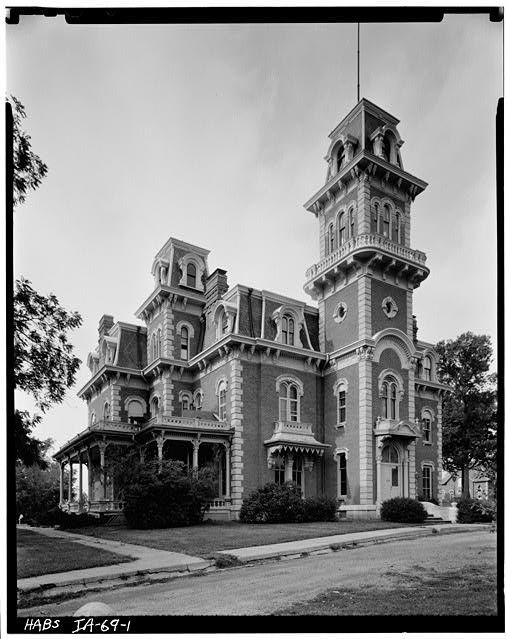LowPolygon
Senior Member
charioteer: thank you for this excellent contribution--it was extremely informative!
|
|
|
Indeed not, they were of their time. And I'm not dismissing them, merely putting them in context as hefty homes expressing the values cherished by the new rich mercantile class who lived in them: status, solidity, respectability, immovability. I don't think the McMansion link is tenuous, because they're status buys too.
Perhaps, but the McMansion phenomenon is specific to a time and culture: the crappy quality, superficial trophy homes of a pre-credit crunch, debt-leveraged era built by poseurs and the ersatz elite. The Rosedale mansion on the other hand truly stands for the rich and priviledged of the time. One was built on hollow image and the misbegotten conceipt that given enough credit we can all attain status while the other was built on the stability of harder-won achievements, financially or socially. A fine line I suppose but one worth noting.
I'm not sure any of that's true though, really. You're making an awful lot of assumptions about awfully large groups of people
I kinda doubt the craftsmanship standards of the early 20th century were really on par with what had come 50 or a hundred years previous (so there's a parallel to the argument we're trying to make now). I'm not sure a building like, sayyy, Casa Loma is any less hollow an expression of newly achieved wealth and privilege as any recent Woodbridge pile. They're both making allusions to a history they're not part of.
McMansions aren't about cheap credit, or even necessarily shoddy construction (which happens and doesn't happen; there are some supurbly built, yet still entirely McMansiony, houses in Oakville and Mississauga). It's about an anachronistic fabrication of history; both time and place
Oh, please. Take an hour out of your day, and actually walk around Rosedale. Who is comparing these houses "with what had come 50 or a hundred years previous"? You mean all those fabulous mansions that were being built in Toronto in uh, 1795?
To compare these homes to the fatuous, tasteless, shoddily conceived design-build EIFS monsters littering the land is laughable, and extremely lazy intellectually. Also, Casa Loma is not in Rosedale. To cherry pick the most OTT example of historicist gargantua as your example just demonstrates how little thought you've given to the issue.
To assert that the term McMansions is not about "cheap construction" is an absurdity. That's precisely the point of the shorthand. What does McDonald's have to do with "an anachronistic fabrication of history; both time and place"? McMansions means crappy construction the same way McJobs means a crappy job. Why is that?: because McDonald's serves crappy food! Pretty simple. Maybe we should add McThinking to the list.
Oh, sorry. I didn't realize we were only talking about architecture as it could have existed in Toronto. I was thinking London, Paris, Rome...
No, you're right, I'm not as worked up about this as you are. But even though I lack the frothing passion, I thought I'd join in on this, uhhh pubic discussion, right?
Anyway, I thought it was clear I was using Casa Loma as an extreme example, but I appreciate you drawing extra attention to itI know you're on an EIFS kick lately, but not every McMansion is carved out of the stuff. I also don't understand the resistance to trying to retroactively apply the title.
Well, you can define it however you want, but I think most people are willing to move beyond a super-strict definition of it. It's weird that you'd ask about McDonalds being anachronistic about place, since that's usually the criticism leveled against it; kind of a strange placelessness about them as they're the same everywhere - kinda like McMansions.
i don't know. i just can't shake it....cheap bad taste just really bums me out.
Isn't there a point in the design continuum where ostentatious "good taste" meets cheap bad taste, though?
McMansions aren't about cheap credit, or even necessarily shoddy construction (which happens and doesn't happen; there are some supurbly built, yet still entirely McMansiony, houses in Oakville and Mississauga). It's about an anachronistic fabrication of history; both time and place
I think, as mentioned before, that your photographs have captured the range of architectural talent that worked on these various buildings very nicely, but I'm with TKTKTK concerning the nature of these Rosedale buildings, which perhaps anticipated the McMansions built on the fringes of the 905 a century later:
... but I'd call them hyperreal rather than anachronistic - built at a distance from the active city in an early suburb of curved streets that rejected the grid, in order to create a certain quasi-aristocratic illusion that everyone could play along with. As a collective statement - a sort of ghetto - they supported the fantasy scenarios of the nouveau riche and their servants who lived in them.
Rosedale is intact, but I'm sure countless late-Victorian mansions were demolished in Toronto, as in every North American city. Many were regarded as ostentatious and impractical before they were even 50 years old.
That said, I like Victorian styles (in houses). They can be compared to McMansions in the sense that they were disposable (and sometimes of poor quality), but I think many houses of that era had enough individuality that the term doesn't really fit.










